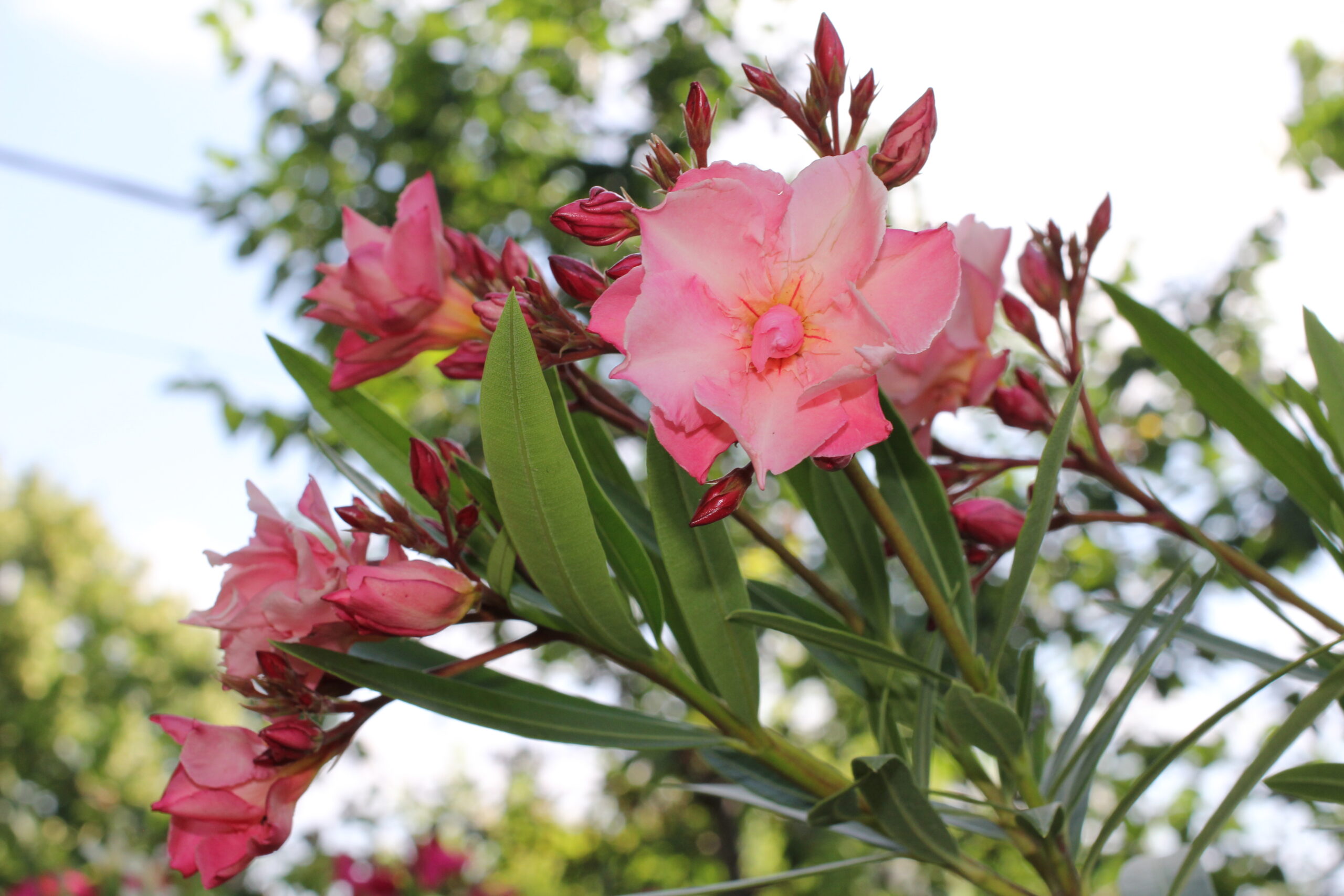
The Fascinating Journey of the Oleander: From Ancient Times to Modern Gardens
With its lush blooms and hardy nature, the oleander (Nerium oleander) has captivated gardeners and plant lovers across centuries and continents. But did you know this ornamental plant has roots that stretch back to ancient civilizations—and even mythological seas?
Let’s take a journey through time and discover how the oleander blossomed into one of the world’s most beloved flowering plants.
🌿 A Plant of Legends and Riversides
Oleanders were already admired in biblical times, often referred to as the “rose of the rivers.” In ancient Egypt, they thrived along the banks of the Nile, adding beauty and fragrance to the lush river valleys.
The name Nerium comes from the Greek Nerion, a nod to Nereus, the sea god, and his daughters, the Nereids—a poetic link between this plant and the natural elements.
🏛️ Blooming Through Antiquity
In ancient Pompeii, oleanders were not just garden plants—they were painted across the walls of homes and courtyards as symbols of nature’s elegance. These detailed frescoes helped create the illusion of larger, greener gardens—oleanders playing a central role in this idealized scenery.
Meanwhile, in North Africa, Arab gardeners were famous for cultivating exquisite gardens. When they reached the Iberian Peninsula, they brought oleanders with them, spreading the plant across southern Europe.
🌸 A Global Garden Icon
In Southeast Asia and China, oleanders became popular thanks to their peach-like blossoms and slender leaves reminiscent of bamboo. In India, where the plant is considered native, oleanders hold spiritual significance—gracing home altars with their beauty.
By the 15th century, Europe was familiar only with the wild, single-petaled pink oleander. That changed in 1547 when a white variety was discovered on Crete’s Mount Ida. Soon, new cultivars began spreading across Italy and England, where red and white varieties were documented as early as 1596.
This era gave rise to “plant hunters,” who traveled the world in search of rare and exotic species—oleanders among them.
🌍 Crossing Oceans: Oleanders in the Americas
The oleander made its way to Florida in 1565, carried by Spanish settlers. It reached Bermuda by 1790, and by 1841, it landed in Galveston, Texas—a moment that would mark the beginning of a long-lasting love story.
A merchant brought the first oleanders from Jamaica as gifts for his wife and sister-in-law. They discovered the plant thrived in Galveston’s salty sea breeze, sub-tropical climate, and saline soil. Within years, the city was full of their lush blooms—and today, Galveston proudly carries the nickname: “The Oleander City.”
💨 A Symbol of Strength and Resilience
In 1900, a devastating hurricane destroyed nearly all plant life on Galveston Island. But the oleanders bounced back faster than any other plant. Since then, they’ve been cherished as a symbol of resilience and life.
In 1967, the city founded the International Oleander Society, and every year Galveston hosts the Oleander Festival—a beloved event for both tourists and plant enthusiasts.

🌺 Oleanders Today: Beauty That Keeps Evolving
With their vibrant flowers, easy maintenance, and adaptability, oleanders have become a staple in gardens across the globe. From southern Europe to American suburbs, they bloom in parks, pots, and flowerbeds alike.
By 1840, there were 36 known cultivars; by 1849, 58. French nurseries—especially in Montpellier—led the way in hybridization, with Sahut’s nursery boasting 170 varieties by 1898, including the first known “hose-in-hose” double-flowered oleander.
Today, countless nurseries and home gardeners are still breeding new and spectacular varieties each year—proving that the love story with this ancient plant is far from over.
🌱 Final Thoughts
The oleander’s history is as rich and colorful as its blooms. From myth and art to survival and science, it’s a plant that continues to inspire and thrive. Whether in a sun-drenched European villa or a Texan backyard, oleanders remain a timeless symbol of beauty and strength.

